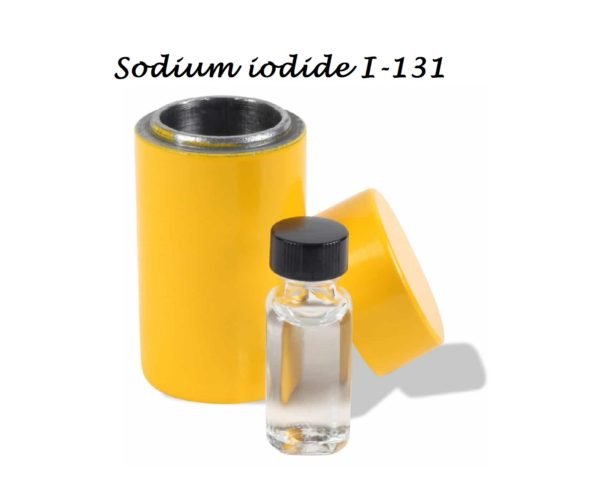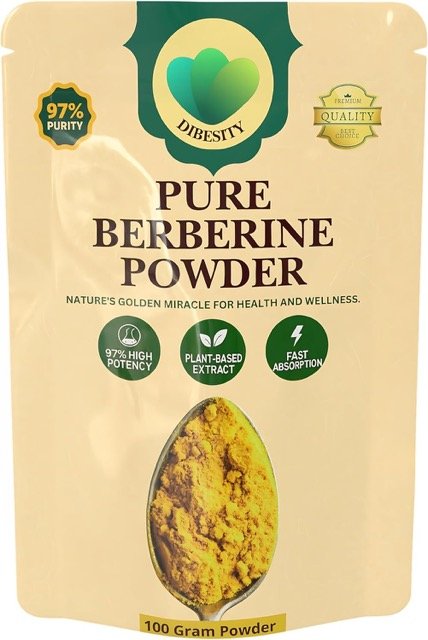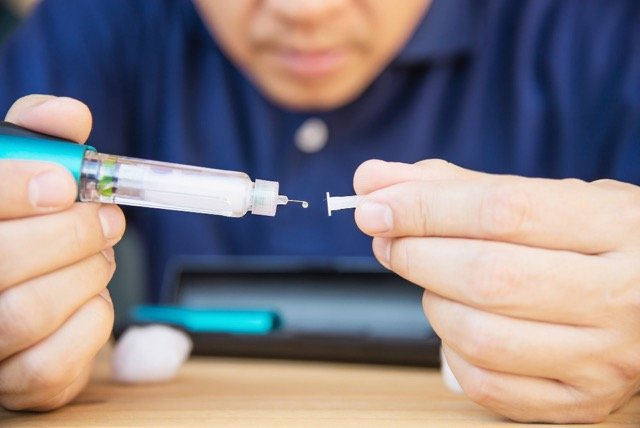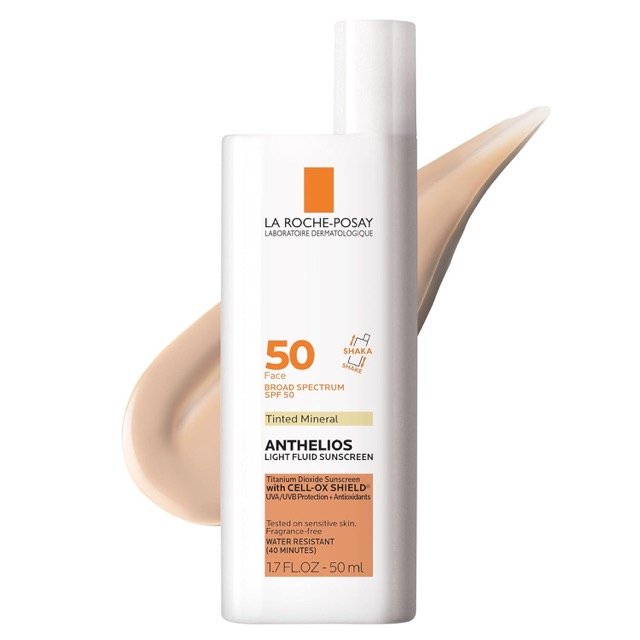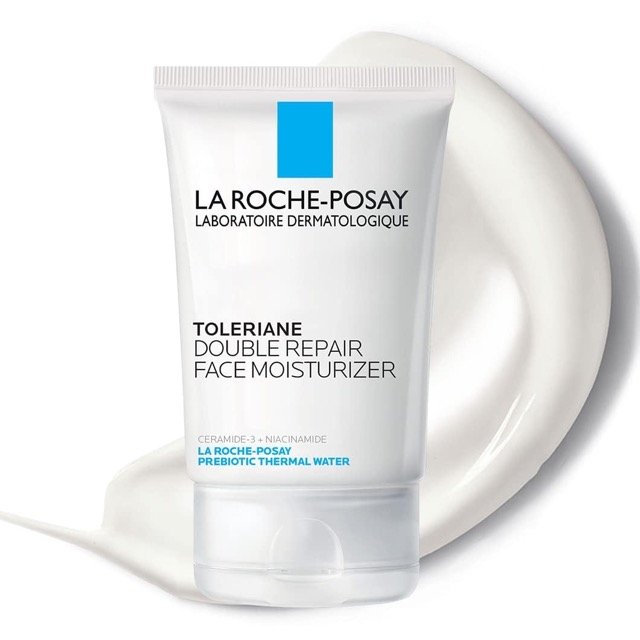Sodium iodide I-131 (Iodine 131) is radioactive iodine that is used to treat a variety of thyroid-related disorders including graves disease and thyroid cancers.
Sodium Iodate (Iodine 131) Uses:
-
Diagnostic agent:
- Iodine 131 is used for the radioactive iodine (RAI) uptake test to evaluate thyroid function and for thyroid imaging.
- Note: Due to increased thyroid radiation exposure with sodium iodide, alternative agents such as sodium iodide I-123, technetium-99m pertechnetate are recommended for routine thyroid scintigraphy
-
Therapeutic agent:
- It is indicated for the management of hyperthyroidism and some of the thyroid malignancies if the lesions take up iodide.
-
Off Label Use of Sodium iodide, I-131 in Adults:
- Whole-body imaging for thyroid cancer metastases
Sodium iodide (Iodine 131) dose in adults:
Note: Dose will be expressed as millicuries if dose >1000 microcuries. Radiation safety precautions are necessary during radioactive iodine treatment. Antithyroid medications should be stopped 3 to 4 days before using sodium iodide I-131.
Diagnostic procedures: Oral based on a 70 kg patient:
-
Thyroid uptake:
- 5 to 30 microcuries (or 0.185 to 1.1 megabecquerels) 24 hours before uptake measurement
- maximum dose of 10 microcuries (0.37 megabecquerels)
-
Dose adjustment if used in conjunction with technetium Tc 99m sodium pertechnetate:
- 4 to 5 microcuries (0.15 to 0.185 megabecquerels) .
Iodine 131 Dose in the Thyroid imaging:
- 50 to 100 microcuries (or 1.85 to 3.7 megabecquerels) 16 to 24 hours before imaging.
Iodine 131 Dose in the Whole-body imaging for thyroid cancer metastases (off-label):
- 1 to 5 millicuries (37 to 185 megabecquerels) 24 to 72 hours before imaging.
Sodium iodate (Iodine 131) dose in the treatment of Hyperthyroidism:
- Manufacturer's labeling recommends 4 to 10 millicuries (or 148 to 370 megabecquerels) but it has high failure rates.
Sodium iodate (Iodine 131) dose in the treatment of Graves’ disease:
- 10 to 15 millicuries (or 370 to 555 megabecquerels) or 150 microcuries/g of tissue corrected for 24-hour radioactive iodine uptake.
Sodium Iodate (Iodine 131) dose in the treatment of Toxic multinodular goiter (off-label dosing):
- 150 to 200 microcuries/g of tissue corrected for 24-hour radioactive iodine uptake (see dose equation below), if hyperthyroidism persists, may repeat after 6 months if needed
Sodium Iodate (Iodine 131) dose in the treatment of Toxic thyroid adenoma (off-label dosing):
- 10 to 20 millicuries (or 370 to 740 megabecquerels) or 150 to 200 microcuries/g of tissue corrected for 24-hour radioactive iodine uptake, if hyperthyroidism persists, may repeat after 6 months if needed
- Dose equation corrected for 24-hour radioactive iodine uptake:
- Activity (millicuries) = (gland weight in grams x desired dose in microcuries/gram x [1/24 hour uptake in % of dose])/1,000
Sodium Iodate (Iodine 131) dose in the treatment of Thyroid cancer:
-
Ablation of normal thyroid tissue:
- Initial: 30 to 100 millicuries (or 1,100 to 3,700 megabecquerels).
Note: 150 millicuries is advised for initial adjuvant therapy in microscopic residual disease without metastasis.
-
Subsequent metastases ablation:
- 100 to 200 millicuries (or 3,700 to 7,400 megabecquerels)
Sodium iodide (iodine 131) dose in children with Graves Disease:
-
Children ≥5 years of age:
- Oral: Dose is dependent upon gland size;
- >150 microcuries/gm of thyroid tissue is necessary to induce hypothyroidism;
- if the gland is between 50 to 80 gms, higher activities (200 to 300 microcuries/g of thyroid tissue) may be needed.
- Therapy in children between 5 to 10 years of age is acceptable if the calculated dose is <10 millicuries
Pregnancy Risk Factor X
- It crosses the placenta and can cause irreversible neonatal hypothyroidism. Therefore, it is not recommended during pregnancy.
- Both males and females should use two effective contraceptives during treatment. They are both recommended for at least one year.
- It is best to delay elective diagnostic procedures until after delivery.
Sodium iodide I-131 use during breastfeeding:
- Iodine-131 can be found in breast milk. Therefore, it is not recommended that you breastfeed or pump for at least 4 weeks before taking sodium iodide I.
- If sodium iodide Iodide has been given after delivery, breastfeeding should be avoided
- It is important to delay elective diagnostic procedures until after breastfeeding has stopped.
Sodium iodide (Iodine 131) dose adjustment in renal disease:
- There are no dosage adjustments provided in manufacturer's labeling.
- However reduced clearance and increased radiation exposure is observed in renal impairment.
- Hemodialysis: Sodium iodide I is dialyzable.
Sodium iodide (Iodine 131) dose adjustment in liver disease:
There are no dosage adjustments provided in manufacturer's labeling.
Side effects of Sodium iodide (Iodine 131):
-
Cardiovascular:
- Chest Pain
- Tachycardia
-
Central Nervous System:
- Cerebral Edema (In Patients With Iodine-Avid Brain Metastases)
- Headache
-
Dermatologic:
- Pruritus
- Skin Lesion (Iododerma)
- Skin Rash
- Urticaria
-
Endocrine & Metabolic:
- Goiter
- Hyperthyroidism
- Hypoparathyroidism
- Hypothyroidism
- Ovarian Failure (Transient)
- Thyroid Storm
-
Gastrointestinal:
- Gastritis
- Nausea
- Salivary Gland Disease
- Sialadenitis
- Sore Throat
- Vomiting
- Xerostomia
-
Genitourinary:
- Inhibition Of Testicular Function (Transient)
-
Hematologic & Oncologic:
- Anemia
- Bone Marrow Depression
- Hematologic Abnormality
- Leukemia
- Leukopenia
- Neoplasm
- Solid Tumor
- Thrombocytopenia
-
Hepatic:
- Hepatic Insufficiency
-
Hypersensitivity:
- Hypersensitivity Reaction
-
Local:
- Local Pain (Pain On Swallowing)
- Local Swelling (Thyroid Or Site Of Iodide Avid Tumor)
- Localized Tenderness
-
Ophthalmic:
- Conjunctivitis
- Epiphora
- Lacrimal Duct Obstruction (Dacryostenosis)
- Lacrimal Dysfunction
- Xerophthalmia
-
Respiratory:
- Bronchospasm
- Cough
- Pulmonary Fibrosis (In Patients With Iodine-Avid Lung Metastases)
- Radiation Pneumonitis (In Patients With Iodine-Avid Lung Metastases)
-
Miscellaneous:
- Radiation Injury (Including Radiation Sickness)
Contraindication to Sodium iodide I-131 (Iodine 131):
- Diarrhea and vomiting
- Breastfeeding and Pregnancy
- Concurrent antithyroid medication (discontinue 3-4 days before administration).
- Treatment of thyroid malignancies without iodide uptake, such as anaplastic and medullary carcinomas
Warnings and precautions
-
Hypersensitivity
- Sodium Iodide I solution could contain sodium bisulfite. This sulfite can cause anaphylactic reactions, fatal asthmatic episodes, and allergic-type reactions.
-
Infertility
- Transient,dose-related testicular impairment in males and ovarian failure in females after sodium iodide is seen.
-
Radiation-induced thyroiditis
- Thyroiditis can be caused by sodium iodide I. This can lead to hyperthyroidism that may become more severe.
- To reduce the chance of thyroid storm and hyperthyroidism, beta-blocker therapy should be used before I use sodium iodide.
-
Radiation toxicities
- These include salivary gland and lacrimal toxicity that presents as conjunctivitis and epiphora.
- There is an increased risk of neoplasia, hematopoietic suppression and transient neutropenia/thrombocytopenia.
-
Thyroid-stimulating Hormone/thyroid Enlargement
- Thyroid enlargement can lead to obstruction of the trachea or esophagus.
-
Graves orbitopathy
- Patients with Graves orbitopathy are not advised to receive radioactive iodine therapy.
- Radioactive iodine therapy (RAI) is only indicated for active/mild diseases.
- A combination of glucocorticoids may be required in cases of high thyrotropin receptor antibody and smoking. This can lead to orbitopathy.
-
Hyperthyroidism/thyrotoxic cardiac disease:
- Radiation thyroiditis can sometimes be exacerbated. This can be prevented by antithyroid drugs and/or beta-blockers prior to and after treatment.
-
Hypochloremia:
- May increase thyroid uptake sodium iodide I and 131.
-
Renal impairment
- Nephrosis can increase thyroid uptake sodium iodide I and 131.
Sodium iodide I-131: Drug Interaction
Note: Drug Interaction Categories:
- Risk Factor D: Consider Treatment Modification
- Risk Factor X: Avoid Concomitant Use
Risk Factor D (Consider therapy modifications) |
|
| Amiodarone | Might reduce the therapeutic effects of Sodium Iodide II131. |
Risk Factor X (Avoid Combination) |
|
| Antithyroid Drugs | It may reduce the therapeutic effects of Sodium Iodide II131. Treatment: Stop antithyroid treatment 3-4 days before sodium iodide I131 administration |
| Thyroid Products | Might reduce the therapeutic effects of Sodium Iodide II131. |
Monitoring parameters:
Thyroid function tests (TSH, free T4, free T3, and total T4 and T3 ) 1-2 months after the treatment and at 4 -6 week intervals for 6 months, or until hypothyroid and stable on thyroid hormone replacement (Graves’ disease, toxic multinodular goiter, and toxic adenoma)
How to administer Sodium iodide I-131 (Iodine 131)?
Proper hydration before treatment and radiation safety precautions are recommended.
Hicon:
- The solution should be diluted before use and kept in a shielded container with a straw. It should be given on an empty stomach.
- The patient should fast at least 2 hours before and 2 hours after administration to ensure adequate absorption.
Radiopharmaceutical:
- Use appropriate precautions for handling and disposal. Waterproof gloves should be worn while handling and administering sodium iodide I131.
Mechanism of action of Sodium iodide I-131 (iodine 131):
- The body's extracellular fluid is able to absorb and distribute sodium iodide quickly.
- The thyroid is the site of concentration of iodide via the sodium/iodide portaler. It is then oxidized to Iodine by beta emission.
Absorption: Oral: Rapidly (90% within 60 minutes)
Distribution: Extracellular space; primarily trapped by the thyroid gland.
Protein binding: None
Metabolism: Iodide is rapidly oxidized to iodine in the thyroid
Excretion: Urine (37% to 75%), feces 10%
International Brands of Sodium iodide I-131:
- Draximage
Sodium iodide I-131 brand names in Pakistan:
Brands will be updated later.
